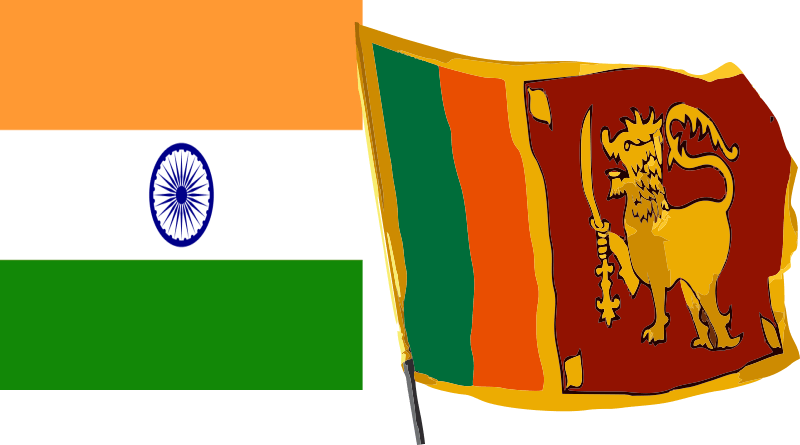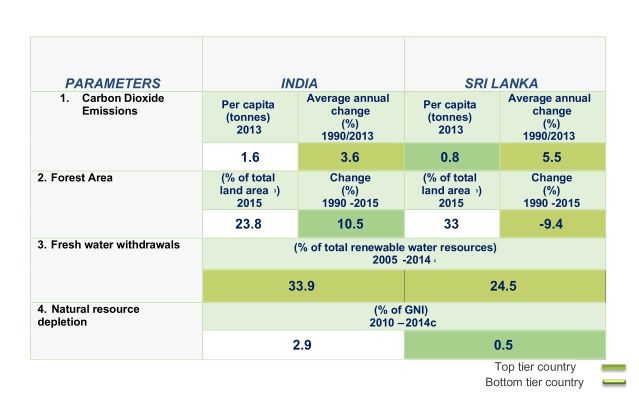

The United Nations Human Development Report, with its country rankings, tends to be remembered for its human development index (HDI). That one ranking number which takes all the headlines and reams of reports and debates. However, the report itself is a huge body of work, with the kind of detailing we can’t find elsewhere for countries worldwide. Thus, for us at IAmRenew, it is an opportunity to bring to our readers some of the lesser reported insights. Every week, we will bring you a country comparison with India where we use the data from the report to hopefully bring you new insights beyond the bland ranking, challenge your assumptions and finally, leave you better informed.

Kicking off the series is a comparison with our neighbour and cricketing playmate, Sri Lanka. Sri Lanka leads the race in South Asia on HDI, and the latest report also gives the island nation a ranking of 73, even as India comes in at 131. However, HDI data shows that Sri Lanka’s average annual HDI growth rate from 1990-2014 was lower than many other South Asian countries.
In our case, for a fresh perspective we take the environmental sustainability parameters published in the Sustainable Development Index of the UN Human Development Report 2016 for the two countries.
Renewable energy in both countries holds variable significance with Sri Lanka a part of the top tier nations when it comes to renewable energy consumption. The SLSEA (Sri Lanka Sustainable Energy Authority) has set a progressive task of increasing its share of renewable energy in electricity generation to 100% by the end of the next decade.
Hydro power is one of the leading sources of power in the country and the government has invested well to use all the resources that are available to them. With 10 large hydroelectric plants in operation, the government has continued to issue small scale (10 MW) hydro development projects to the private sector. India however remains a story of unfulfilled potential yet.
The average annual change in Carbon Dioxide emissions for both the countries was in the bottom third of the all the countries in the index. Indicating the strong dependence on fossil fuels to meet the power demands which over the 13 year period has continued to increase. In India’s case at least, with overall per capita emissions still very low, and with high growth practically a necessity to pull vast swathes out of extreme poverty, the emissions figure has only one way to go yet. Up.
India is amongst the top 10 countries when it comes to increase in forest cover while Sri Lanka due to deforestation (Agricultural expansion as its main source of revenue and Tea plantations) which is its most serious environmental issue is a part of the bottom tier countries. However, according to the classification of forests, India has gained a majority of its forest cover under ‘very dense forests’ and suffered a decline in the ‘moderately dense forests’ which are vital to any nation’s resources. Voicing this source of worry, forest expert from Centre for Science and Environment (CSE) Ajay Saxena said, “This negative correlation means that India is losing good forests for developmental pressures, forest degradation and climate change.”
The depletion of natural resources has been controlled in recent years by the Sri Lankan government by introducing new authorities and policies, which seem to have worked to some extent. In India, the same steps have struggled to yield results with the main cause for it being the country’s increasing population and the linked increase in demands. For India clearly, self-regulation and conservation will need to be wedded with completely fresh approaches and technological enhancements, for it to realise its true potential.
As Kerala strives towards a sustainable future, the Kochi Water Metro Limited (KWML) has revealed…
Kundan Green Energy has acquired Jabalpur MSW Pvt. Ltd., a well-established Waste-to-Energy plant that was…
Agriculture waste to energy conglomerate SAEL is preparing to go public within the next 12…
The Cuttack Municipal Corporation (CMC) and Oil India Limited (OIL) have come together to develop…
India’s Ethanol Blended Petrol (EBP) Programme has emerged as a global benchmark in clean energy…
Refex Renewables & Infrastructure Ltd. has announced that its wholly-owned subsidiary, Refex Green Power, has…